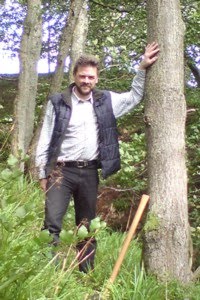I have argued the postholes found on the berm of Hadrian’s Wall are the remains of the a timber rampart, which together with the
Turf Wall, formed the primary rampart and ditch phase of the frontier.[here] Recent work by Eric
Graafstal also suggests the turf wall was the very first part of Hadrian’s Wall,
and would date this phase to 119 AD,
although the author believes that the Turf Wall was built in isolation against
the tribes in SW Scotland [1]. Unfortunately, this leaves the Turf Wall dangling,
awaiting the eventual arrival of the Stone Wall in centre of the country, and also presupposes the Northerners lacked the tactical ability to outflank the Romans by simply riding round it, rendering it useless. But that’s not the only problem with a Wall
made of turf; is such a thing likely, practical, and is there any real evidence
to support it?
ROGUECLASSICIST’S BULLETIN ~ September 8, 2025
10 hours ago































